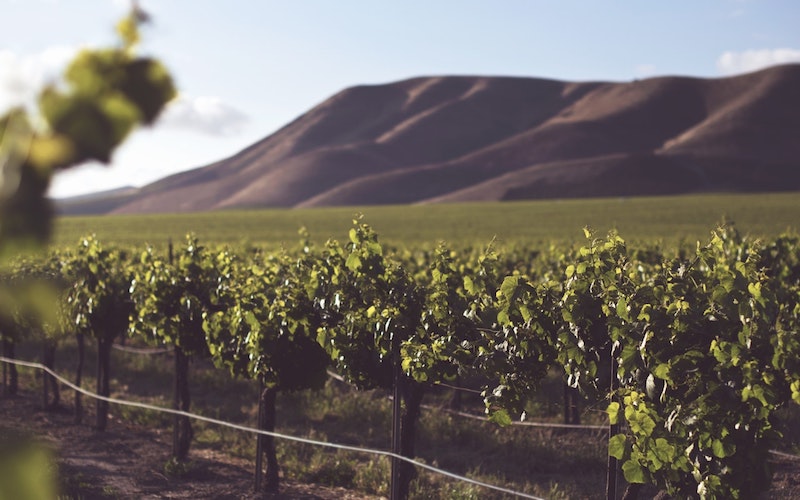How Wine Is Made: Red Wine
Episode #3 of the course The ultimate beginner’s guide to wine by Paul Kalemkiarian
Welcome back!
Previously, we looked at conditions that impact wine grapes. Today, we’ll discover how red wine is made. Making wine from grapes follows a natural process. Certain refinements are necessary, however, to make sure that you make only the best wines.
All Wine: Harvesting and Controlling the Balance of Yeasts
When the time comes to harvest the grapes, the winemaker looks at the ripeness as measured by sugar, acid, and tannin levels. Grapes can be harvested by hand or by mechanical harvesters and are sometimes even harvested at night, as the sugar composition of the grapes is more stable then due to lower nighttime temperatures.
Present in the white bloom on the skin of grapes are not only good wine yeasts, but also tricky wild yeasts and bacteria. These are brought to the grapes by insects or carried in by the breeze and are fashionably aerobic (meaning they need plenty of oxygen to work).
If fermentation were left to take place unaided in the open air, the wild yeasts would set to work in a furious rush until overcome by alcohol at only 4%. The slower working, more persistent wine yeasts would then take over until they completed their job, leaving the fruits of their labors exposed to bacteria that transform alcohol into vinegar.
Wild yeasts and bacteria must be prevented from taking a grip. There are two ways of doing this: (1) seal the tanks and starve them of oxygen or (2) add sulfur dioxide to the wine juice (or “must”), which feeds on oxygen and forms an oxygen-exclusive coating on top of the must. These precautions taken, vinification is quite straightforward.
Wine Making Process: Red Wine
If the grape variety dictates the flavor of a wine, the way in which the wine was made will determine how good it is. The traditional style of red wine making for most full-bodied red wines involves passing the grapes through a stem-removing crusher and into a fermenting vat.
Producers may decide not to remove the stems, letting them impart their tannin to the fermenting juice. Long fermentation in contact with the grape stems will give full-colored, tannic, slow-developing wine. High temperatures also give a deep color but produce “younger drinkers.” Good for Vin de Table, not so great for fine claret.
After fermentation, the liquid is drawn off the vat, and the pulp and skins go into the press. The stronger the pressing, the more bitter the result. The wines from both vat and press are mixed and transferred to tanks or barrels where the second fermentation will occur. This involves the transformation of malic acid (found in most fruit) into the softer lactic acid (found in milk).
“Fine” wine almost always spends at least a year in barrels, large or small, new or old. In tanks or barrels, the wine is “fined” with egg white, which drags suspended yeasts and other solids in the wine downwards before being “racked” (passed from one container to another, leaving the solids behind), filtered, and bottled.
Beaujolais and many other “younger drinkers” are made by a slightly different method: “maceration carbonique” or “whole berry fermentation.” Grapes go straight into a closed fermentation vat that is then saturated with carbon dioxide. Oxygen cannot get at the fruit, so full-scale fermentation cannot start; however, within each grape, a kind of mini-fermentation does take place. Oxygen is allowed into the vat after a week, and the fermentation continues normally. The wine is then left to mature like any other wine based on the winemaker’s goals and knowledge of the aging process.
That’s how red wine is made. Next time, we’ll look at the process of making rosé and white wine. Until then.
Recommended book
The World Atlas of Wine, 7th Edition by Hugh Johnson, Jancis Robinson
Share with friends

